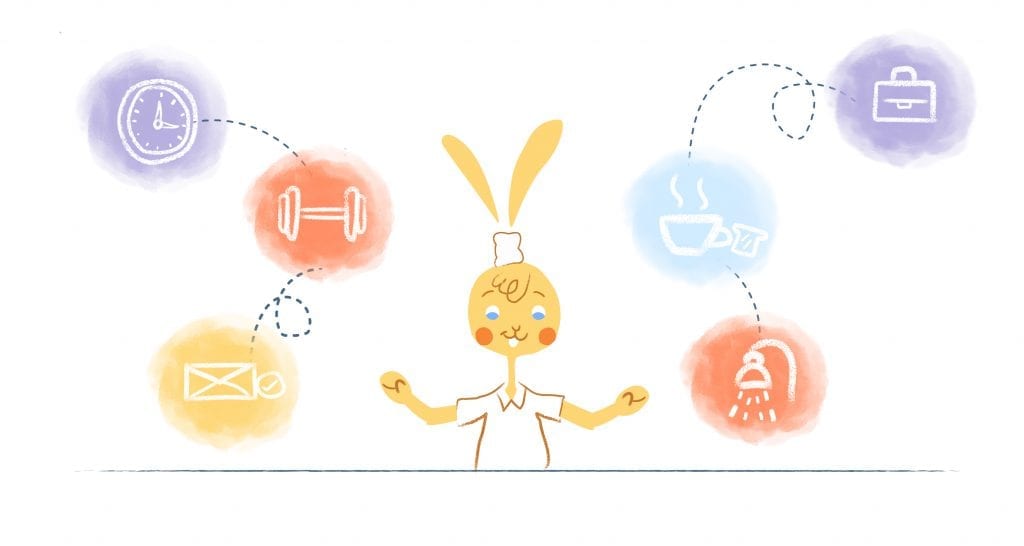

It may not be at the top of your priorities, but sharing a Calendar with the rest of the folks in your startup is a must. After all, it’s the best way to keep everyone on the same. It also boosts productivity and prevents precious time from being wasted. But, creating and managing your team’s calendar starts and ends with the right calendar app. And, here are ten of the best options for startups.
1. Calendar
Calendar is a time management and scheduling tool that eliminates those lengthy back-and-forth communications when setting up an event. Instead, share the app’s scheduling link, and it does the rest of the work for you. It’s not magic, if you’re wondering. Instead, Calendar relies on machine learning so that it will make smart suggestions on how to schedule your next meeting.
But, that’s just scratching the surface. Calendar also uses machine learning so that you can add new events quickly. It’s also time zone friendly, meaning that it takes care of availability for you — as opposed to you attempting to figure this when traveling or scheduling meetings with remote teams. Finally, Calendar integrates with your Apple, Google, and Office 365 calendars so that you have one real-time view of your life.
2. Google Calendar
Is this an obvious choice? Sure. But, Google Calendar has proven to be one of the best online calendars on the market. Mainly this is because it’s easy to use and comes packed with features that allow you to get the most out of it, such as color-coding and sharing your calendar via email or embedded link.
Google Calendar also allows you to add your team’s calendars, create out-of-office messages, and add events with natural language. Also, because it’s part of the Google suite of tools, your events from Gmail are automatically added to your calendar. And, you can share and collaborate on docs, spreadsheets, Keep, and Jamboard.
Even if you can’t use the free version, this is still an affordable option. Business plans start at just $5 per month.
3. Any.do
Any.do is more than just a calendar app. It’s one of the best tools to house your agenda, to-dos, and goals. As a result, it’s arguably one of the best options to keep you and your team organized and productive.
There are also some pretty cool features within the app. For example, there are location-based reminders and the option to receive your agenda every morning. In addition, the color-coded dots for all of the events in your calendar make it easy to identify what you have on the docket for the day.
Any.do does have a free version. However, for teams, you may want to switch to the premium plan, which starts at $2.99 per month.
4. Teamup
This tool was designed specifically with groups in mind. As a result, you can schedule assignments, track progress in real-time, and share calendars with everyone on your team. And, you can organize all of this information by using color-coded sub-calendars.
One of my favorite things about Teamup is that you don’t need an account to access your calendar. That means anyone you share your calendar with a view without having to waste time logging in. Best of all, for small teams, it’s free. For larger one’s plans start at just $8/month,
5. Calendly
Calendly is another app that makes scheduling a whole lot less stressful. Less stress because it reviews your existing calendars, and checks your availability. You then share your availability with others, and they pick a time when they’re free.
You can then set buffers between meetings and block last-minute meetings requests. There’s also time zone detection, and it works with a wide range of apps like Zapier, Salesforce, GoToMeeting, and Stripe.
The basic plan is free. But, if your startup has various event types planned each month, you’ll need to get with a paid plan. The premium version is $8 per user/per month.
6. Float
Float is a scheduling and planning tool. It provides real-time scheduling updates and the ability to edit events through drop-and-drag. You can also create recurring events and receive reports to help you improve your efforts.
There are also features like time-off tracking and overtime alerts for your full-time staff. But, if you’re working with contractors, you add short-term gigs. It also plays nice with iOS, Android, Slack, and Zapier. And, there’s a flat fee of $5 per person scheduled per month.
7. Plan
Described as part calendar and part project manager, Plan goes beyond creating and sharing a team calendar. There’s the ability to create agendas and a working timeline. The team feed can be useful when working together on a project since you can see what’s been completed and solicit ideas.
Plan organizes all of the data you have stored in your calendar, email, Salesforce, Zendesk, and Github. Doing so means that all relevant projects and scheduling information are in one convenient location. Because of this, teams report that they save 15 hours per week.
The plan is free if your startup has no more than four users. For larger groups, the premium plan is $6.67 per user per month.
8. Woven
Woven is an intelligent calendar that uses a visual graph for scheduling and planning. As a result, you can see how you’re spending your time so that you can better manage your days. The app also comes with a virtual assistant that handles all of your scheduling for you.
It also lets your team collaborate on any upcoming events. You can share your schedule via email, text, and Slack to speed up the scheduling process. As of now, Woven syncs seamlessly with Google and G Suite calendars. However, the free tool is working on Office 365 integration.
9. Teamweek
Teamweek is another tool designed with teams in mind. It also takes a more visual approach to planning and scheduling the projects within your startup. Teamweek lets you see what everyone is working on, as well as their progress, so that you can hit the goals you’ve set.
Additional features include project roadmaps and timelines for your team. There’s a free plan if you have fewer than five people. But, for larger teams, you’ll have to select a paid plan for $39/month.
10. Trello
Trello is a project management tool. Because of this, it’s ideal for assigning and keeping tabs on tasks and projects. But, what sets it apart from other similar tools is that it uses digital boards.
How does this work exactly? Well, let’s say that you handed off an assignment to someone. You would place a card on the board. Now, when switching to the calendar view, you can see when the task is due. Additionally, you’ll be able to see all due dates on that specific day, week, or month.
Image Credit: alexander suhorucov; pexels; thank you!











John Rampton
John’s goal in life is to make people’s lives much more productive. Upping productivity allows us to spend more time doing the things we enjoy most. John was recently recognized by Entrepreneur Magazine as being one of the top marketers in the World. John is co-founder and CEO of Calendar.